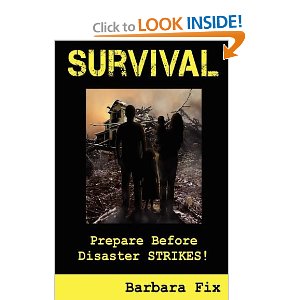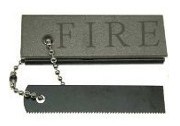 Having an automobile in a survival situation could be a blessing or an encumbrance. It all depends whether or not your ride has the necessary characteristics and capacity to endure harsh conditions and obstacles. Cars and the like are significant monetary investments, to be sure; this is why if you do have one or more, you should determine whether or not your vehicle has what it takes when times get very, very dire.
Having an automobile in a survival situation could be a blessing or an encumbrance. It all depends whether or not your ride has the necessary characteristics and capacity to endure harsh conditions and obstacles. Cars and the like are significant monetary investments, to be sure; this is why if you do have one or more, you should determine whether or not your vehicle has what it takes when times get very, very dire.
Some people must be thinking I’m espousing the idea of purchasing expensive motor vehicles. Quite the opposite, actually. For one, your speedy convertible sports car simply won’t make the cut to be a survival vehicle, in my opinion. The only time I’d think a crazy-expensive truck like a Hummer is a good idea would be if you had your bug-out location conveniently near or within an auto parts warehouse or a junkyard. It’s not about buying an expensive car, folks.
With that out of the way, let me elaborate on what your ideal survival ride should be/have:
Chassis Type: SUT/SUV, a Truck, or a Mini-Bus
When all heck breaks loose, do not expect the roads to be ideal in terms of traffic or safety. You might end up taking the less-travelled paths, or just go off-road entirely. Having a larger, more rugged vehicle will help for a lot of reasons.
The first is capacity. Ideally, you and your family should be able to fit in one vehicle (I know this means that particularly large families ought to get a mini-bus). It just makes it all the more riskier if you have to travel as a convoy. Aside from people, you have to be able to fit your bug-out bags and other supplies. This is why I made that comment earlier about sports cars as an ill choice for a survival vehicle, unless you’re all by your lonesome.
Vehicles with bigger wheels and have much better clearance from the ground will do better when going through rougher roads, flood waters and whatever else that’s in your way. Don’t go overboard with getting a big ride, however. There are situations (like densely packed woods and soft muddy ground) that bringing a vehicle that’s way too large can also be a disadvantage. Get something large enough to contain your family and supplies, but small and agile enough to be driven through most areas.
Drivetrain: Manual Transmission, 4-Wheel Drive
I’m sure a lot of people aren’t going to like this, but hear me out. Manual transmission vehicles can be push-started in the event there’s a problem with the ignition system or the car battery’s faltering. Oh yes, you can actually push or two a manual with no worries, unlike automatic cars. Generally, manual transmission vehicles are also easier to maintain, are more fuel-efficient, and there are situations when downshifting is a good idea, too.
As mentioned in the chassis type, bigger vehicles with bigger wheels (and with 4-wheel drive) will be able to go over obstacles with more ease.
Engine Type: Diesel
Diesel engines are generally more hardy and are less prone to stalling than their gasoline counterparts. In situations where you’ll be carrying a fully-packed car, or even towing some cargo along, torque is more important than speed and responsiveness. It’s also more fuel-efficient than a corresponding gasoline engine. The more modern common-rail diesel injection engines actually handle like gasoline engines, and still pack the benefits of their more primitive cousins.
As for electric and hybrid cars being more efficient, the reasons I wouldn’t recommend them are as follows: availability of electric charging stations (scratch that if the power lines go out; it’s more efficient to store diesel fuel than electric car batteries), and more elaborate electronics that are more prone to fail in situations where maintenance may not be available.
Lights: All Working, Plus Fog Lamps
Weather conditions may make visibility an issue, so if your vehicle doesn’t have a pair or more extra fog lamps, have some installed.
Tools and Supplies: As Complete As Possible
You have to be ready to consider the reality that there may not be any places to have your vehicle fixed in a dire situation. You will have to be able to do some rudimentary repairs and maintenance on your vehicle when the situation arises. That definitely includes you having to get a class or two in automotive maintenance, and a bunch of manuals in your glove compartment.
Your tools must be complete and capable of servicing your vehicle (do not settle for the default tools that come with the vehicle), and have the necessary spares within the compartment, things like engine oil, brake and power steering fluid, fan belts, wiper blades, fuses, and of course, spare tires. I know you have one in there, but try to have two or more, as flat tires are going to be one of the most common problems you will encounter.
If I have left anything out, do pitch in and add it in a comment below. Choose your chariot wisely and drive safely, everyone!
About the Author
Stacey Thompson is a professional writer, marketer, entrepreneur, and a lover of weird little animals. She is based in San Diego, California, and is currently working on her gang’s group blog, Word Baristas.









